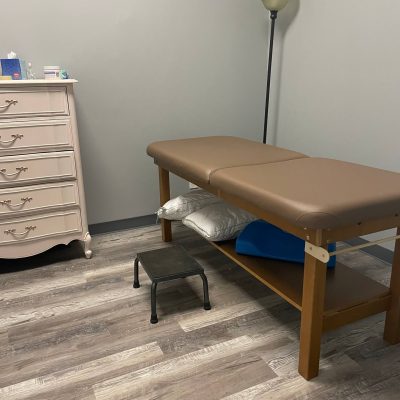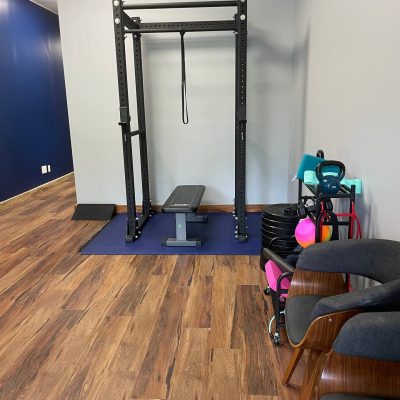Exercising in water has many positive benefits for the pelvic floor. It creates less load on the pelvic floor because the body is more buoyant, decreasing your weight. Your weight is pressing down into the water and the water is pressing back up against you. Buoyancy is working in your favor! This means that traditional movements on land like squats, which can be challenging, are easier when performed in the water.
Being in the pool decreases the effect of gravity on the pelvic floor muscles. The internal organs ‘float’ taking more pressure off weak pelvic floor muscles, which will make it easier to contract and relax weak pelvic floor muscles. Additionally, you may experience success in the water that you do not normally experience on land with pelvic floor contractions or squeezes. For some people, the buoyancy effect gives people the freedom to do exercises in the water that would normally cause leakage on land such as walking, jumping or running.
The compression the water provides against your body can give support for women with diastasis recti and pelvic congestion syndrome. The compression of the water is also beneficial for pregnant women suffering from swelling in their legs. The compression can help facilitate lymphatic vessels during exercise and push water out of the legs.
Here are other positive aspects of water exercise:
- Water’s natural viscosity or resistance strengthens muscles
- Warm water increases blood flow and delivers needed oxygen and nutrients, and draws blood into the muscles that are working.
- Warm water also decreases muscle spasm and tension, which can decrease pain.
- Due to less pressure being put through joints, joints can move through a greater range of motion.
- The hydrostatic pressure of water supports and stabilizes patients with balance deficits to perform exercises without a fear of falling.
Group exercises are easy to find. Look at your local gym or YMCA!
Water provides good support for the pelvic floor and is a great option for women who are overweight, pregnant, those who have pain, those with weak pelvic floor muscles with conditions such as prolapse and diastasis recti.
Tips for Pool Exercise:
- No one is watching you! No one truly cares what you look like in a bathing suit!
- Enter the pool slowly. If you plunge right in – the pelvic floor reflexively tightens.
- You do not need to have equipment. Your exercise plan may simply include focusing on contracting and relaxing the pelvic floor, varying your hold times and trying to hold the pelvic floor contraction for longer periods of time. If you want to use equipment, usage can increase both muscular strength and endurance and can also be used for cardiovascular conditioning, making them beneficial for anyone with pelvic floor issues.
- Water walking is great exercise if you don’t want to do traditional ‘water aerobics.’ If you’re up for it, swimming laps can also be beneficial for the pelvic floor.
If you would like advice on a pool exercise program, contact us for further information! It will be imperative that anyone wanting to start exercising in the water for the benefit of the pelvic floor knows how to properly contract and relax the pelvic floor and coordinate pelvic floor work with proper breathing.
Magic City Physical Therapy
Hoover, AL
Fax (205) 573-3709







